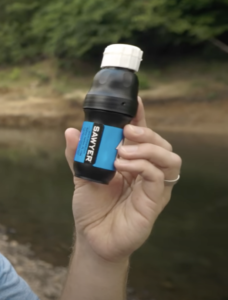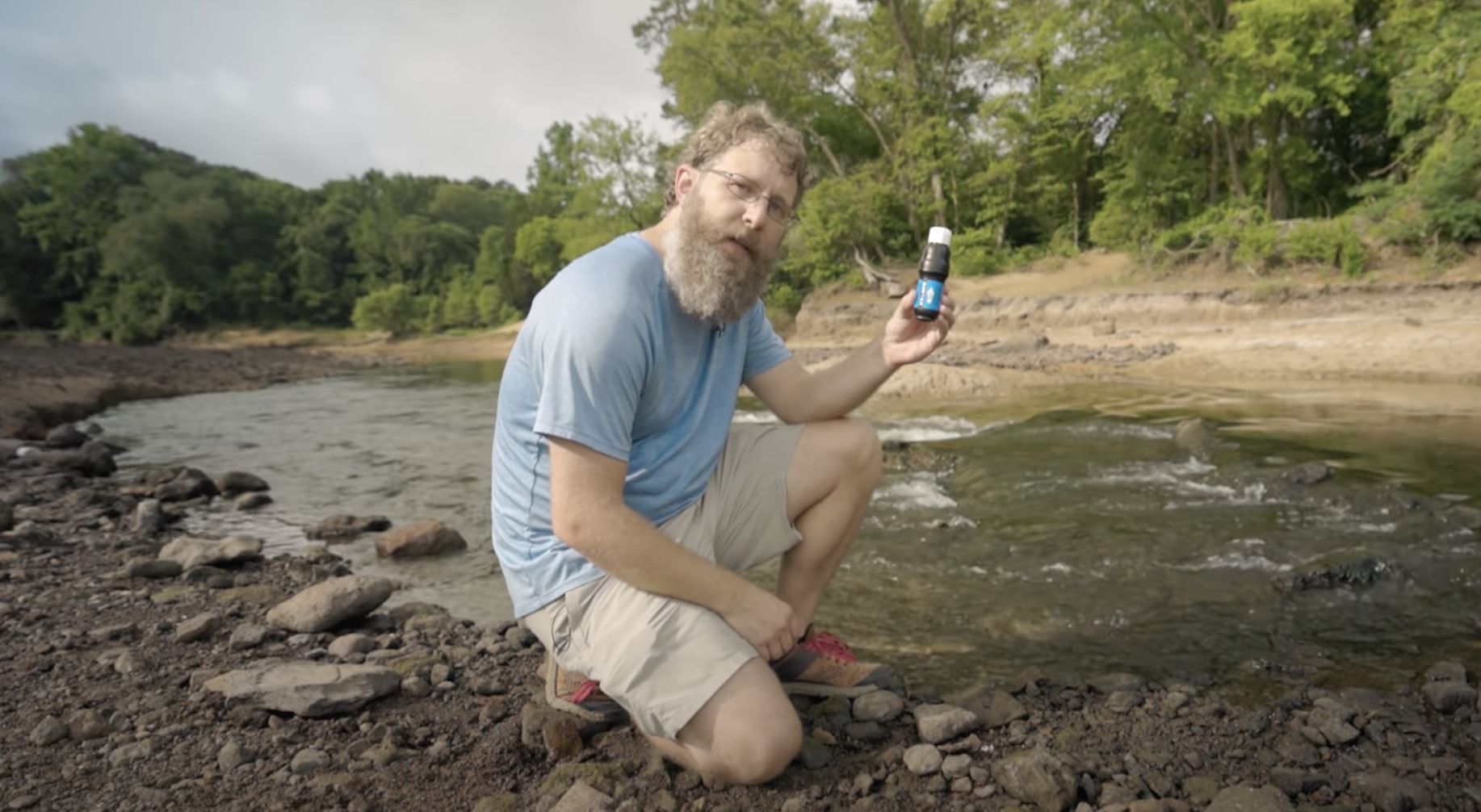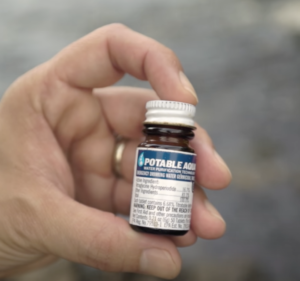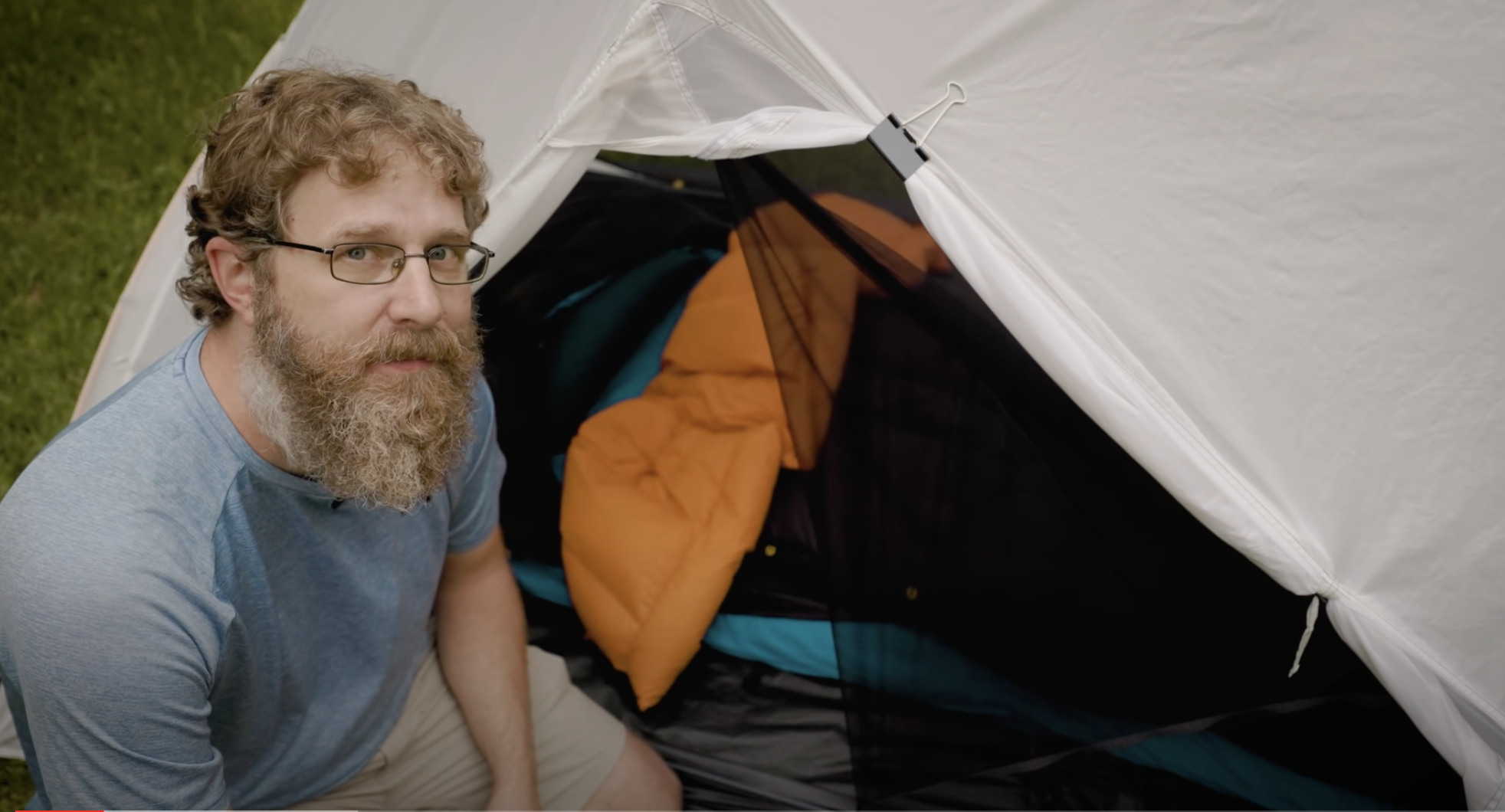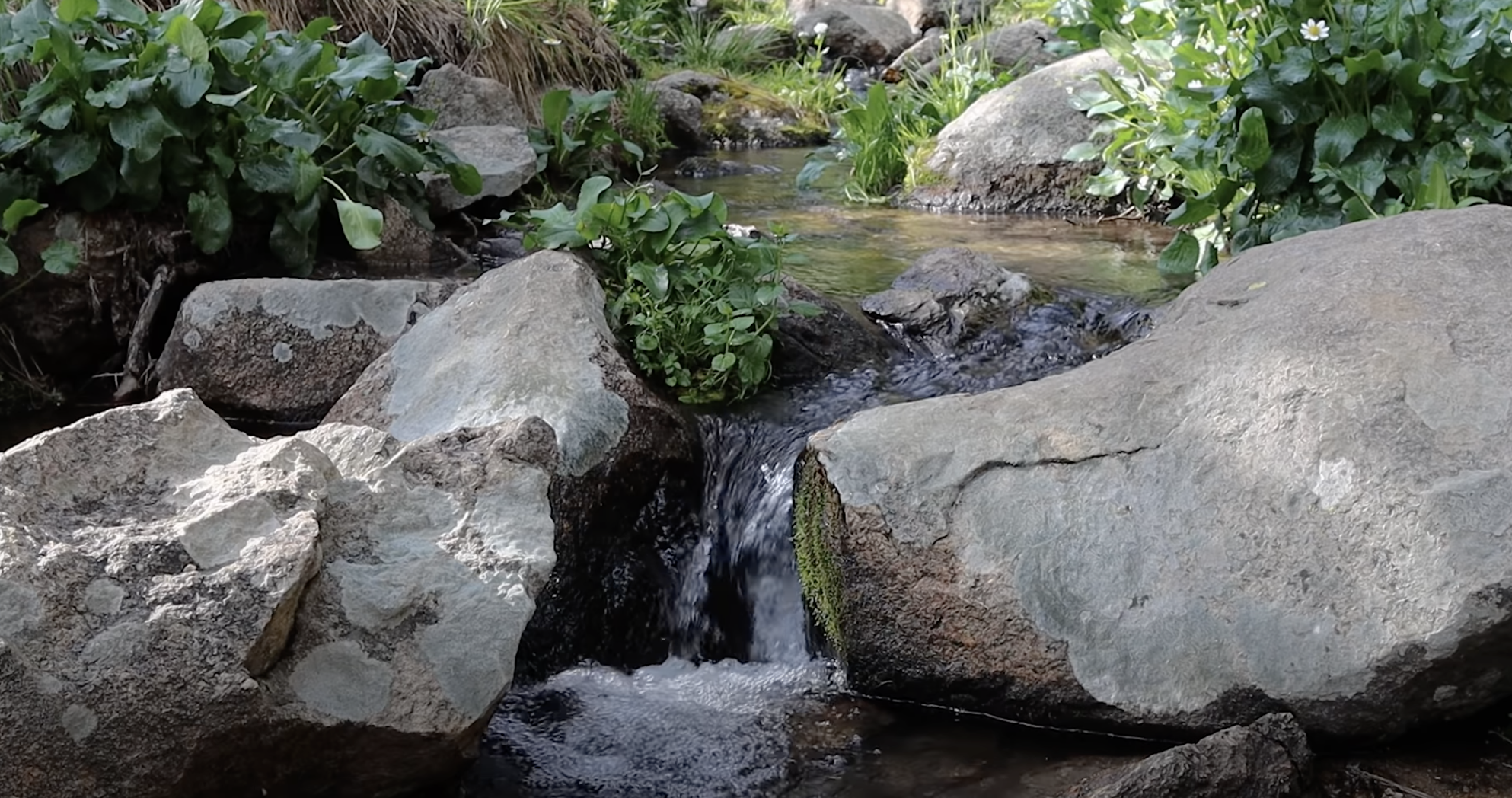
9 Ways to Avoid One HUGE Camping Mistake
When the bottom falls out of your world and the world falls out of your bottom …
That is what can happen to you if you don’t filter or purify your water outdoors.
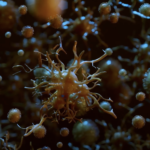
Most outdoor water sources are contaminated with microscopic bacteria and parasites that, if not treated or removed, will get you very, very sick. We are talking vomiting and uncontrollable diarrhea. Just the kind of stuff you want to avoid while on the trail.
Which is why most people carry a water filter like this:
But this is only one way to get clean drinking water. What about all the other ways? Watch the video below to find out, or keep scrolling to read more.
Giardia
If you have never had Giardia while backpacking, count yourself lucky.
Giardia is the main reason we filter, treat or purify our water. It’s a parasite that can live in even the most prestine mountain streams. Once infected, you will spend about a week barely leaving the toilet.
It was first described to me as,
“The bottom falls out of your world, and the world falls out of your bottom.”
I’ve had it twice, and it’s miserable.
Most people use a filter like the Sawyer Squeeze.
But this is only one way—and not even the best way—to clean your water. And what happens if this fails? What are some easy and affordable backups?
Water Filters
To get clean drinking water you need to filter, treat, or purify your water.
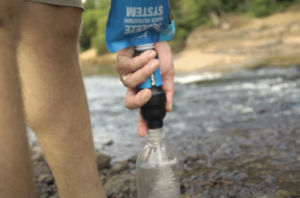
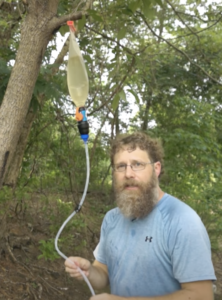
As I’ve already mentioned, filters are probably the most widely used. But even with filters, there are a variety of designs to use. Most people use squeeze filters because there are cheap, easy and affordable. We call them squeeze filters because you usually fill up a dirty water bag and squeeze the water through the filter.
But squeeze filters don’t have to be squeezed, and you can often rig them up to work as a gravity filter , using gravity to pull the water through the filter.
Very similar to squeeze filters are straw filters, like this old Lifestraw.
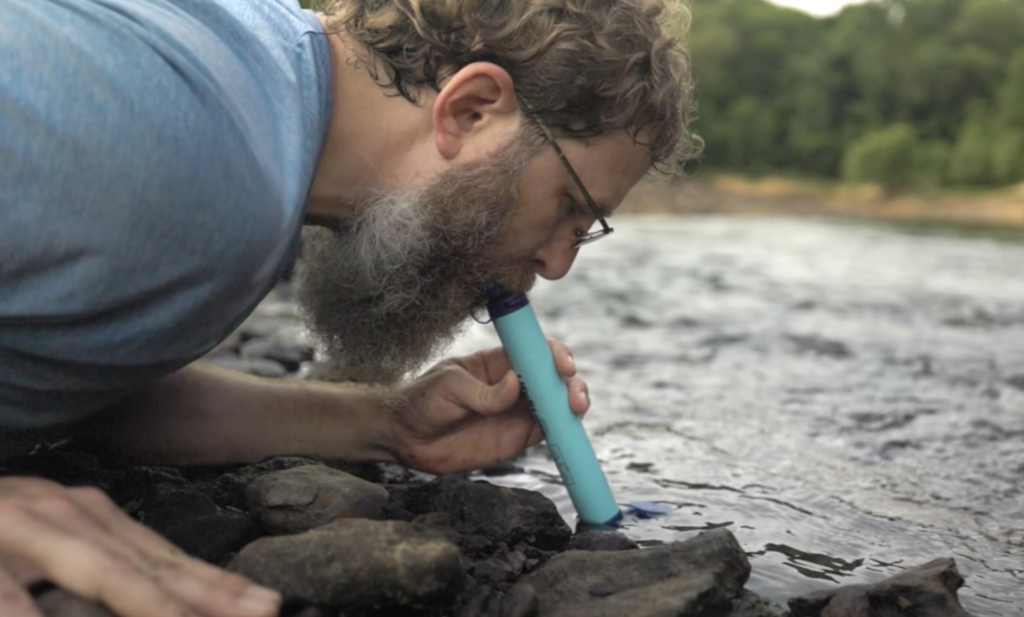
The only difference is instead of gravity or squeezing the water through, you suck on the filter. You used to have to lie on your stomach in the mud and drink straight from the steam or use it like a gigantic straw in a cup. But now a lot of companies are building straw filters straight into a handheld bottle, like the Peak filter made by Lifestraw pictured below, or the more popular, BeFree made by Katadyn.
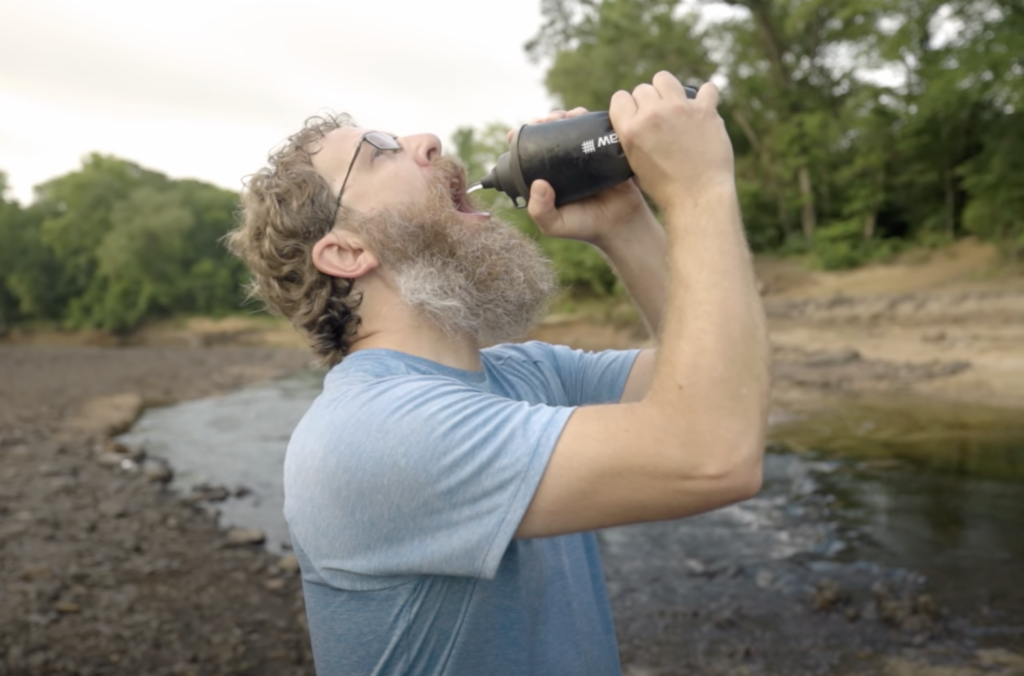
But you can also use a pump-style filter like the Katadyn Hiker.
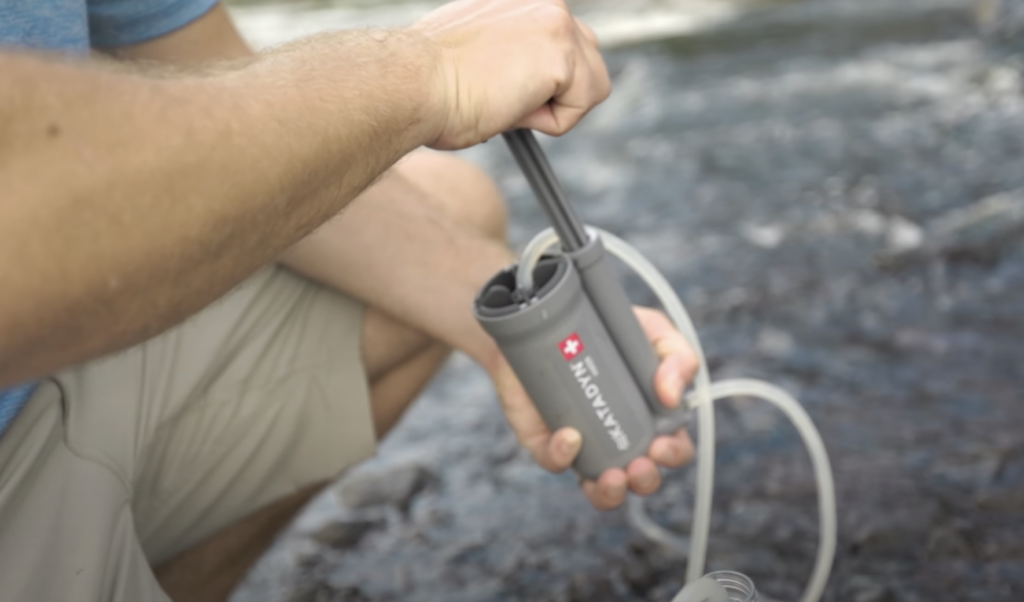
This used to be my go-to filter because I liked the ease and simplicity of filtering straight into my water bladder. There’s also the added benefit of a carbon core that removes not only parasites like Giardia, but bad tastes as well. This type of pump filter also uses glass media instead of hollow fiber to filter water and is less susceptible to damage from freezing.
Water Purifiers
So, filters remove most of the parasites and bacteria you will encounter in North America’s wild places, but if you plan to hike overseas, or even near farmland here in the States, water in these areas can contain not only parasites, but chemicals and even viruses. In those cases, you need not just a filter, but a purifier, like the Grayl water purifier.
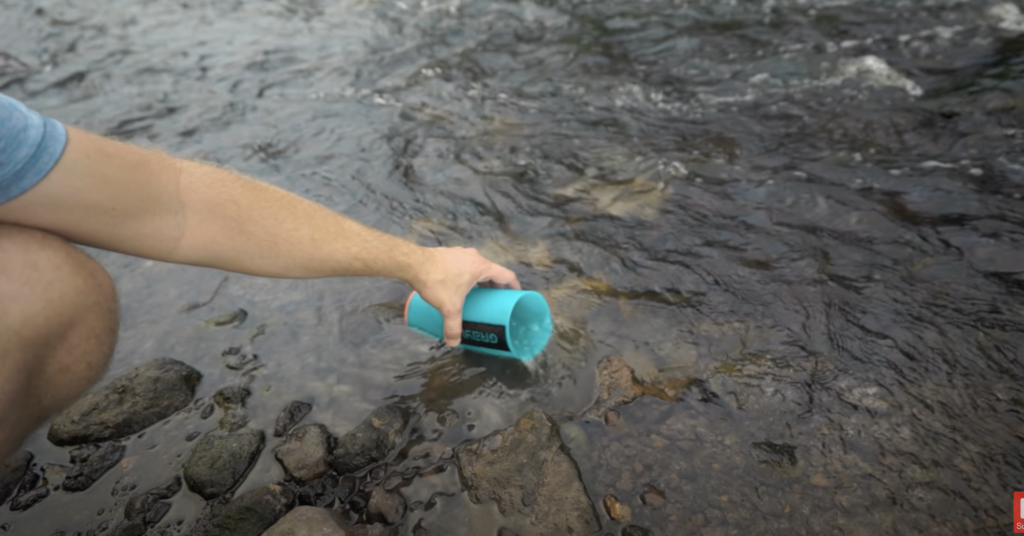
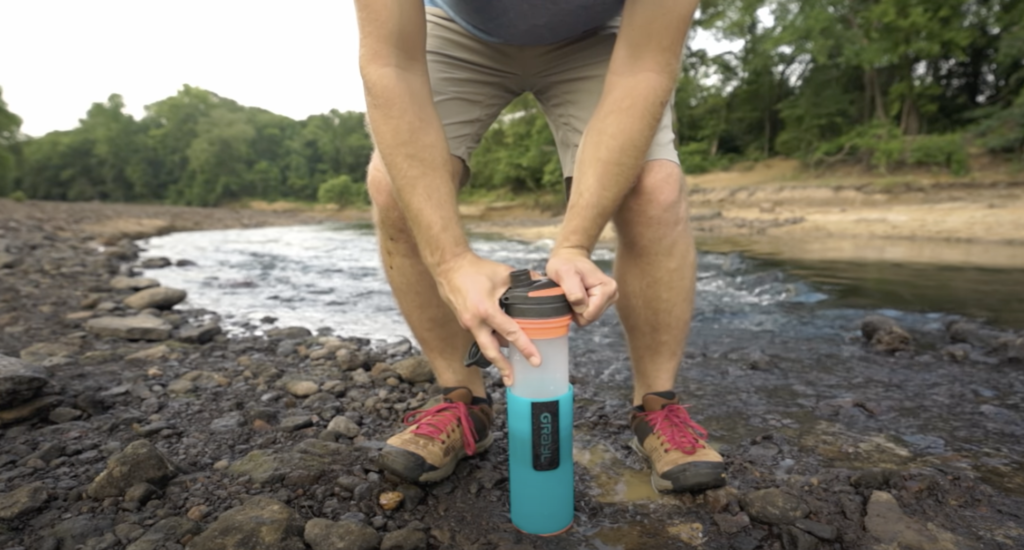
The Grayl uses a combination of activated carbon and ion exchange technology, which can remove impurities that are dissolved as ions in the water. This technology removes just about everything that can harm you, giving you pristine drinking water.
Regular filters can’t remove viruses and chemicals, and even Grayl can only do it for about 150 liters or less. In fact, I tried to test this by recreating a video I saw online where I saw Grayl turn Coca-Cola clear as water. I recreated that test, but didn’t quite get the same results, which made me conclude that yes, Grayl can filter out just about anything, but only in small quantities before it loses that ability altogether.
If you’re interested, here’s the link to that video.

And if you are interested in purifiers, Grayl is the most affordable one I know of. But there are alternatives, like the $300 MSR Guardian.
Water Treatments
If you aren’t going to filter, you can treat your water. Water treatments are perfect to use as a backup to filters or purifiers because they are cheap, lightweight and easy to throw in your pack.
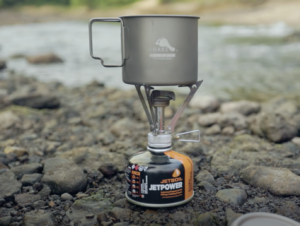
In fact, you probably already have a stove and a cook set in your pack, and so the most readily available treatment is simply to boil your water before drinking. Boiling water with a rolling boil for one minute kills all the nasty parasites, protozoa and other harmful contaminates, rendering them harmless.
But that’s the the thing about treatments—they don’t remove anything, so you’re still drinking this stuff; it just won’t hurt you. and treatments can take take longer. You have to not only boil your water, but you have to wait for it to cool down.
Even if you use something like household bleach, you still have to wait for it to kill the parasites.
That’s right, I said bleach. You can actually put 2–4 drops of bleach per one liter of water, then wait 20–30 min before drinking, and all those nasty parasites will die off, once again, rendering them harmless.
But if you don’t like the idea of drinking bleach, you can get something like these Potable Aqua Iodine Tablets—water treatment tablets that basically do the same thing. I typically carry some of these around in my first-aid kit just in case I have a filter fail on me.
But I would only use this in an emergency, because they can give the water a bad taste.
If you don’t want to do any of that, you can actually treat water and kill contaminates with UV light. There are several devices on the market, like the Steripen that uses a small, but simple UV light that you stir in the water, and the UV light actually kills the parasites and other harmful contaminates. But just like the other treatments, it only kills contaminates; it doesn’t remove them.
And one more …
So that is just about every way to filter, treat or purify water outdoors. But what is the best way to treat water? Well, it really comes down to what you need. If you are traveling overseas, the Grayl maybe your best bet. But for most people on hikes in North America and Europe, a squeeze filter will do just fine. And my favorite squeeze filter by far is the Platypus QuickDraw water filter. I recommend you watch this video talking about all the reasons why I think this filter is one of the best on the market.

If I missed something, please do drop a comment below and let me know.
Be sure to follow me on Instagram and YouTube, and as always, thanks for stopping by.



